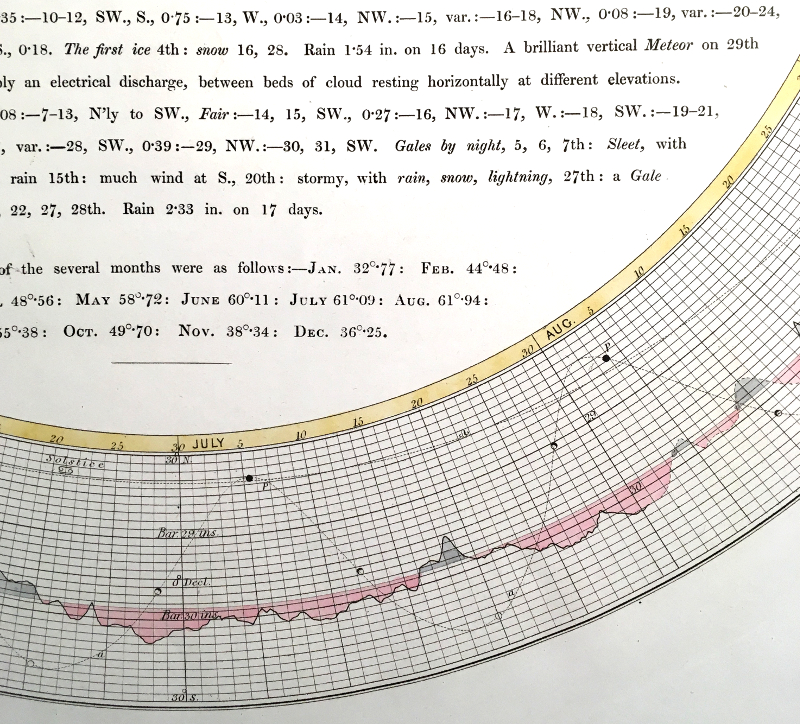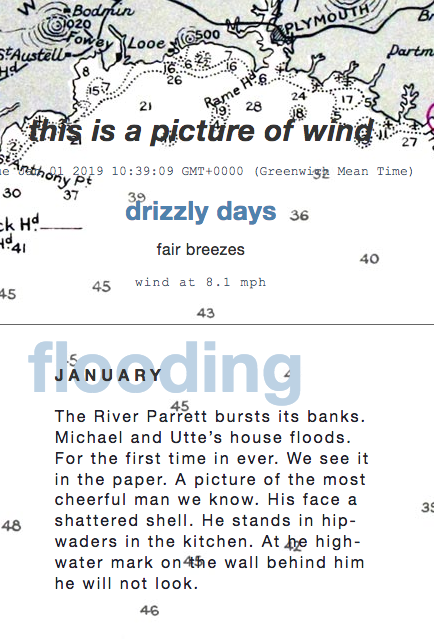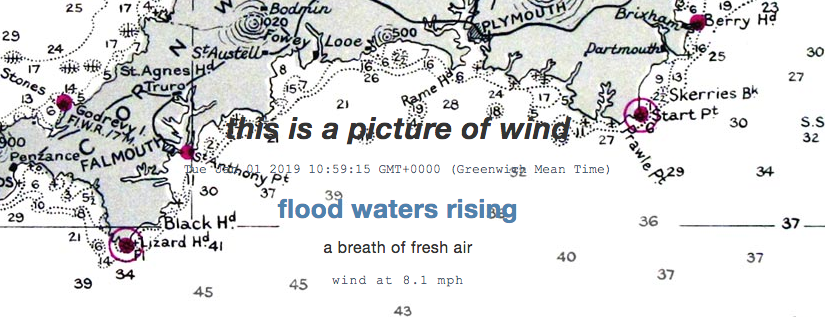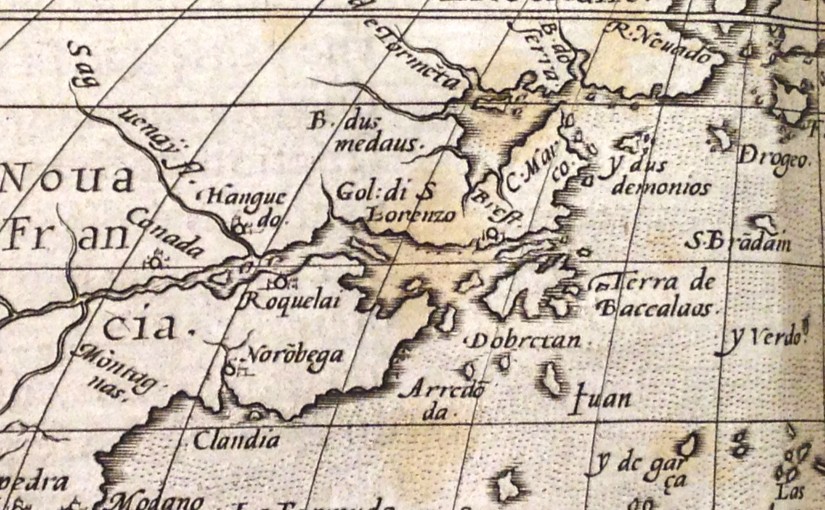For the whole of 2018 I posted a new poem at the start of every month to my web-based work, This is a Picture of Wind, a weather poem for phones. These monthly poems were based on weather observations made two centuries ago by Luke Howard. A Quaker, chemist, and amateur meteorologist, Howard is perhaps best known as the author of the essay On the Modifications of Clouds, in which, he gave the clouds the Latin names we still use today. Hendecasyllabic fragments of that essay made their way into my my web-based work The Gathering Cloud. For This is a Picture of Wind, I consulted a later volume by Howard: Barometrographia: twenty years’ variation of the barometer in the climate of Britain, exhibited in autographic curves, with the attendant winds and weather, and copious notes. This large, beautifully printed folio was published in London in 1847. It can be found in the British Library at Shelfmark Tab.817.a.

Some readers may have noticed as the year progressed, that lurking below these new posts was a second row containing a full year of poems. Those poems were written first. The form the core impetus for the piece. They were written in response to the conveyor-belt of storms which battered southwestern England in 2014, resulting in catastrophic flooding in Somerset and the destruction of the seawall at Dawlish, near where I live in Devon. For 2019 I’ve moved that year of poems up to the top row for greater visibility.

Initial research for This is a Picture of Wind was made possible with the support of the Dot Award for Digital Literature. The finished work was one of three web-based works by Canadian women commissioned for #IOTADATA by IOTA Institute in 2017 with the support of a grant from the Canada Council for the Arts. In December 2018 IOTA released a free e-publication about the #IOTADATA project containing an introduction by David Clark, a three-way interview between the artists, and an essay about each artist’s work. I am deeply indebted to IOTA curator Mireille Bourgeois for commissioning this work in the first place and all the more so for convincing Johanna Drucker to write about it.
By choosing a calendar grid to organize the presentation of observations in This is a Picture of Wind, Carpenter puts the dialogue between the phenomenal world and its connection to human frameworks of perception into immediate, graphical view […] the wind cannot be caught in calendar frameworks any more than the waters of the sea are held in a net. The wind rushes through the rational structure, even as it leaves behind, in this case, a residue of poetic notes, observations formulated in relation to fleeting sensations of the volatile atmosphere.
~ Johanna Drucker, DYNAMIC POETICS: JR CARPENTER’S THIS IS A PICTURE OF WIND
Drucker’s full essay is available for free download. It begins on page 20 of this PDF.
In 2018 This is a Picture of Wind won the Opening Up Digital Fiction Competition People’s Choice Award 2018 and was shortlisted for the Robert Coover Award for a Work of Electronic Literature 2018.
In 2019 I will be presenting the work at Land Lines: British Nature Writing, 1789-2014.
Twitter users can follow a remix of the work as it unfolds year-round. Fragments of text from the project are blown about but a Twitter bot posting variable poetics of wind into new configurations every six hours through this account: @apictureofwind


